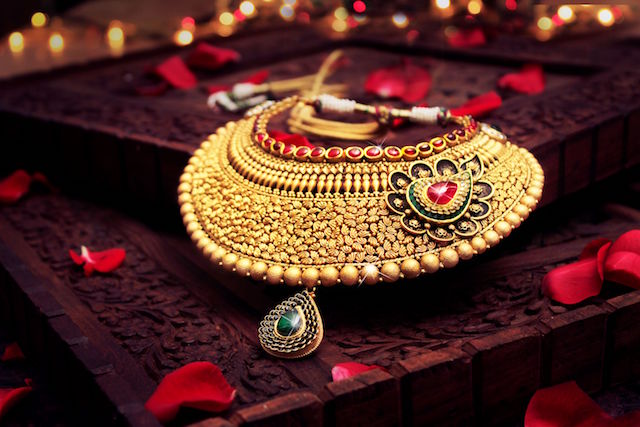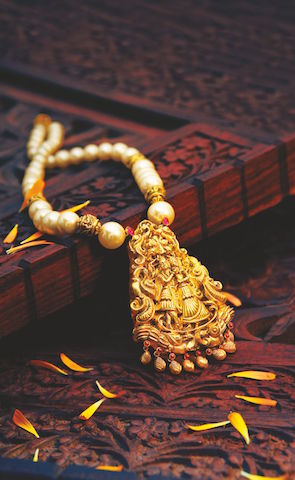Come the festive season, the itch to spend and craze to add to jewellery collection increases. The entire media, be it electronic, the social or print, starts overflowing with advertisements targeted at the women folk specially.
But before you step out to satiate your thirst for yellow metal and precious stones, we must be cautious of the fine prints of the advertisements and of course basics of the jewellery. The cautions to buy only hallmarked jewellery have already got registered in our minds. It remains to be seen how long we care to remember such cautions. In a conversation with the owner of the largest jewellery showroom Akshay Verma, Managing Director of Verma Jewellers at Solan, who were the first to introduce hallmarked jewellery in Himachal Pradesh, I tried to get a peep into the diamond jewellery which is the craze of new generation.
For gold jewellery, he told, the Government of India has norms of standardisation for ensuring the purity of gold. Just the hallmarked jewellery does not mean that it is of 22 carat or 23 carat purity, he told. All the hallmarked jewellery, he said has be bear three types of stamping on each piece. The three stampings are one of BIS mark, the other of carat value, and the third being that of the manufacturer, he informed. At the time of buying, one must look for these marks with a magnifying glass, he said. In addition to the value of gold, the jewellers charge for making, polishing etc which vary and are not standardised.
To a question on taking a proper receipt of the purchase, Akshay Verma informed that one must insist on receipt. Majority of the jewellery, he said, try to hoodwink the buyer with pleasing words and pleas of saving on taxes. He informed that the excise duty leviable on jewellery was a mere one (1) percent and along the receipt one gets the entire details of the weight, purity, quality and breakdown of the value charged. Such a receipt and a certificate is must for any jewellery, he insisted.
Giving instances of theft of jewellery or loss in travel, he told that it is not possible to register the loss with the insurance agency without a proper receipt, and in case of recovery, it is not possible to take the claim from Police without a proper receipt. He cautions a word of advise for all buyers to insist on a proper receipt bearing the details of purchase. Not insisting on a receipt just for a saving of one percent is not only against the rules, but may also lead to bigger problems later, he warned.
My anxiety was more towards the purchase of diamond jewellery and how to ensure its quality and real value. To a common man, a diamond is a diamond, is a diamond. At the most he can relate to some brands being advertised like Nakshatra, Gili, etc, but what is the real value, I enquired Akshay Verma, Managing Director of Verma Jewellers of Solan. While we remain very conscious on the carat value of gold, we hardly know anything about diamond.
Basically, diamond value, he told, was internationally measured with 4Cs. He detailed all about the 4Cs of diamonds viz. Colour, Cut, Clarity and Carat value of diamonds. Cut, he told is about the sparkle and brilliance of diamond which can be gauged by the flash in the back lustre. If it is too shallow, the from bottom, it wont have the desired symmetrical proportions. Hearts and arrows are the shapes that can be seen from top and bottom of diamonds. An ideal cut shows 8 shapes of hearts and of arrows which denote its classic value.
Colour in diamonds, he told, determined its purity and they range from colourless, the purest, the rarest and most valuable to varying degrees of yellow. Besides, red, black, blue, and other colours are of more values. Each diamond, he told, had a unique character.
What is all about the synthetic diamonds available in the market I wanted to know to which he clarified that they were crafted and artificially created. Some diamonds pushed in the market are no better than crystal glasses, he told. To ensure value for money spent, he told that a customer needs to be aware of fakes in the market, and go in for only certified diamonds purchased against proper bills.
How does size of a diamond matter, I enquired. One carat of diamond denotes it weight which is 0.20mg, he told. It is not necessary that a bigger diamond is more costly, the other factors like cut, clarity, colour denote real value of a diamond, he clarified. The cuts and clarity, he added, were the work of craftsmen who add value to the product. Broadly one carat of diamond costs between Rs.2.5 lakh to Rs.4 lakh, he told.
As hallmarking of gold jewellery adds to the customer’s confidence in the purchase, similarly a third party assurance on the quality of diamonds with certification from the very producers of the diamonds would add to the customer satisfaction, he added.
The 5th C that is much more important in the trade is Confidence, were his final words before summing up the interview.
Happy shopping to all but keep your eyes and ears open is the buzz word.
Having moved on after spearheading corporate communications of a large public sector undertaking, its time to give vent to the creative urges that lay suppressed for long





